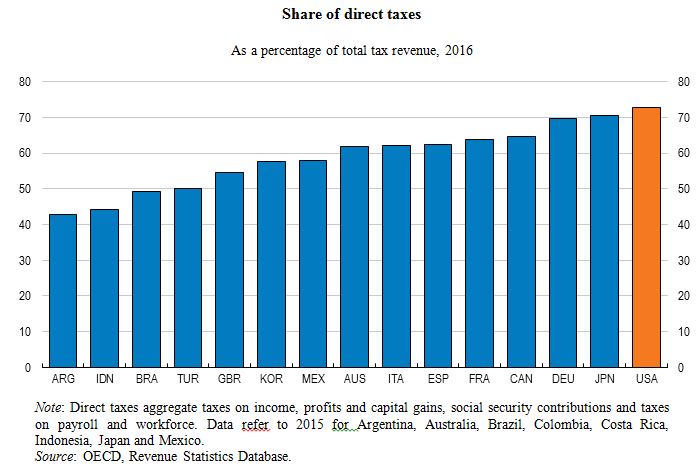Productivity and long term growth
Going for Growth 2018 - United States note
Going for Growth is the OECD flagship report analysing structural policy settings and economic performance to provide policymakers with concrete reform recommendations to boost growth and ensure that the gains are shared by all. The 2018 Interim Report reviews the main growth challenges and takes stock of reforms enacted over the past year -- in both advanced and emerging economies -- on policy priorities identified in the previous issue of Going for Growth.
Country highlights
Per capita output remains among the OECD highest, even if it has slowed compared to the pre-crisis trend, reflecting demographic pressures on labour force participation as well as the drag on productivity growth from weak investment. Income inequality has fallen recently but remains higher than the OECD average, not least due to a low share of national income accruing to the poorest.
Public infrastructure is not keeping pace with needs of the economy contributing to congestion, urban sprawl, and environmental degradation. Actions to boost investment and maintenance of infrastructure are hence a top priority. Improving human capital formation is key as sizeable segments of the population lack opportunities to acquire and maintain skills valued highly by employers. Helping the long-term unemployed finding their way back to the labour market is also a challenge requiring a strengthening of training programmes. Finally, the US devotes a much larger share of its resources on healthcare than other OECD countries, with little apparent gain in health outcomes.
Going for Growth 2017 recommendations include:
- Improve, maintain and rationalise infrastructure by boosting investment in, and maintenance of, infrastructure. Promote mass transit, and use federal programmes to encourage co-ordination across State and local jurisdictions. Implement usage fees based upon distance travelled and congestion, to help fund transportation and to encourage users internalise the broader costs of congestion and road wear and tear. Expand federal programmes designed to improve access to fixed broadband.
- Strengthen active labour market policies by expanding funding for reskilling, building upon programmes that, in the past, have shown effectiveness in facilitating reemployment.
- Improve equality of opportunity and outcomes in education by using targeted federal funding to reduce disparities in student opportunities and encourage States to be ambitious in lifting educational attainment. Require paid parental leave and improve access to quality childcare to help reduce wage gaps and improve career prospects. Expand the Earned Income Tax Credit and raise the minimum wage. Reduce pre-screening for employment on criminal records.
- Improve the efficiency of the health care sector by continuing to conduct pilot programmes of Medicare provider payment systems, assessments of utilised research by the Patient-Centered Outcome Research Institute and others that compares the effectiveness of different prescription drugs and treatments. Ensure that cost-saving measures thus identified are rolled out, and monitor their impact as well as developments in the coverage.
- Reduce distortions in corporate taxes by adopting legislation that cuts the statutory marginal corporate income tax rate and simplify corporate taxes and broaden the tax base. Make R&D tax credits refundable for new firms.Continue with measures to prevent base erosion and profit shifting.
Recent policy actions in these areas include:
- The statutory marginal corporate income tax rate has been reduced from 35% to 21%.
United States: Latest Economic Forecast
United States: Latest Economic Survey
Related Documents
